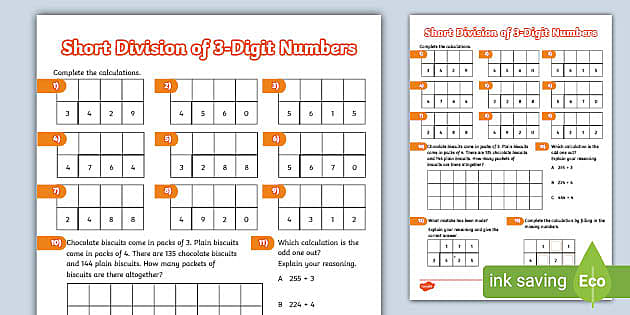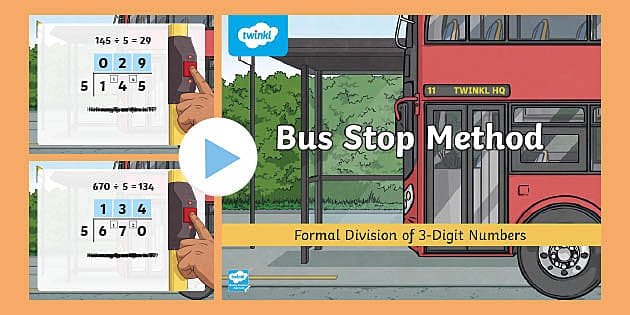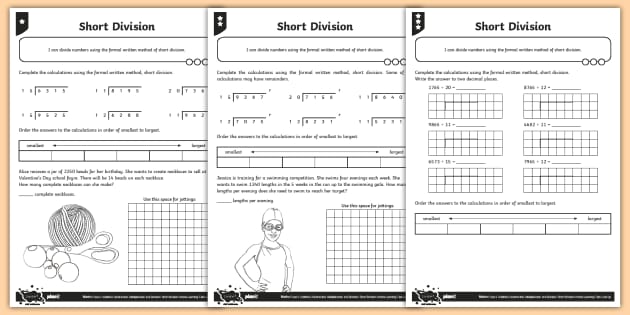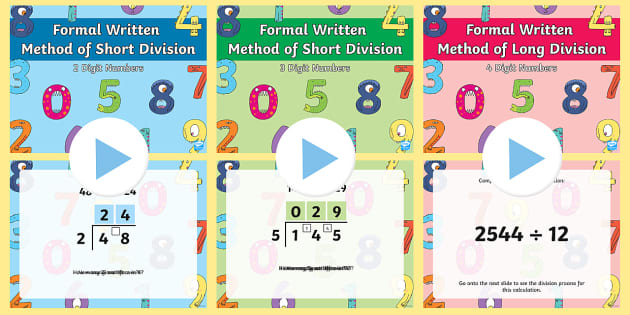


The bus stop method, which is also commonly known as ‘short division’, is a written method of division for larger numbers.
The method bears a resemblance to a bus stop, hence its name. The dividend, which is the number being divided, is placed inside the bracket (bus stop shelter) whilst the divisor, the number it is being divided by, is placed outside the bracket (bus stop shelter).
The quotient, answer to the division calculation, is placed on top of the bracket (bus stop shelter).
dividend ÷ divisor = quotient

The bus stop method is seen as a quicker and more manageable division method than chunking. However, students need to have a good understanding of the relationship between multiplication and division facts.
| Question: What is 92 ÷ 4? |
Set out your calculation correctly, with the divisor, 4, outside the bus stop shelter and the dividend, 92, inside.
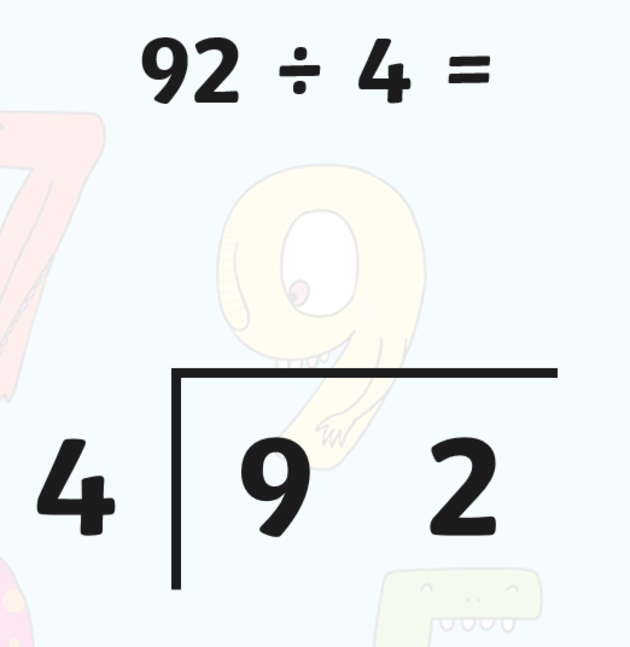
Divide each digit in the dividend by the divisor, one at a time. Work out how many lots of 4 there are in 9 tens.
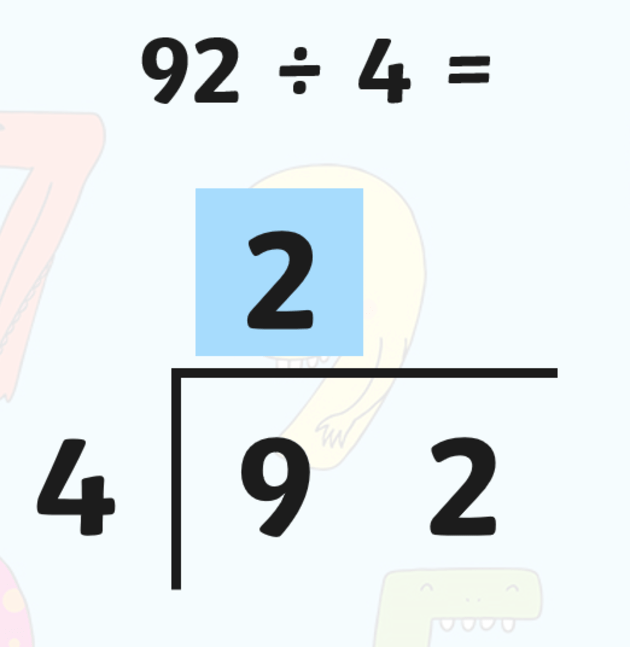
There are 2 lots of 4 in 9 tens. The number 2 is written above the number 9.
There is 1 ten left over (remainder) because 9 − 8 = 1. We carry this 1 ten over to the next digit to be divided by the divisor.
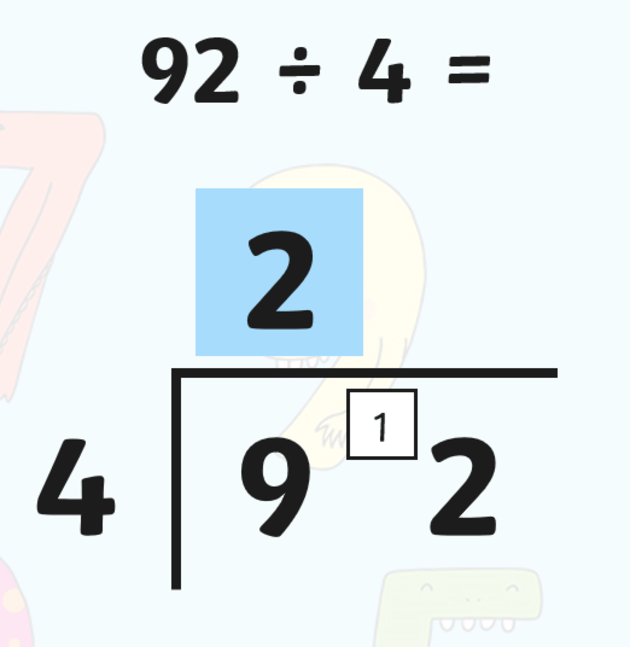
Work out how many lots of 4 are in 12. There are 3 lots of 4 in 12. The number 3 is written above the number 12.
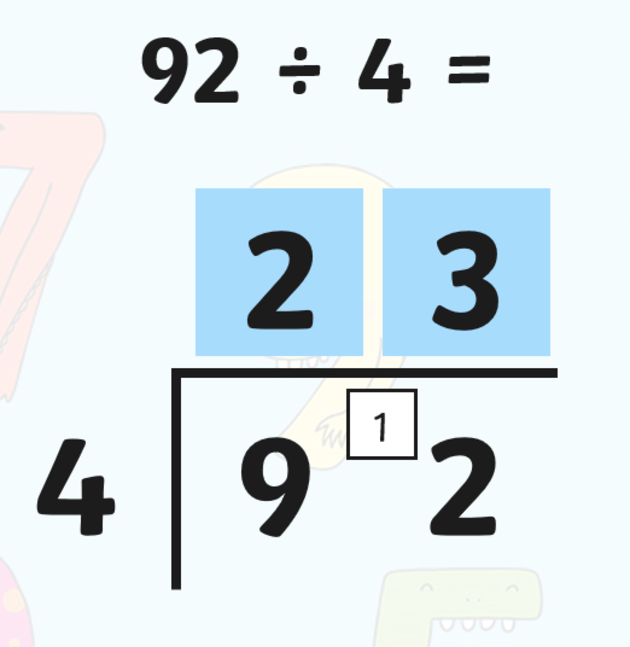
Step 5
There are 4 lots of 23 in the number 92 so 92 ÷ 4 = 23.
| Question: What is 670 ÷ 5? |
Set out your calculation correctly with the divisor, 5, outside the bus stop shelter and the dividend, 670, inside.
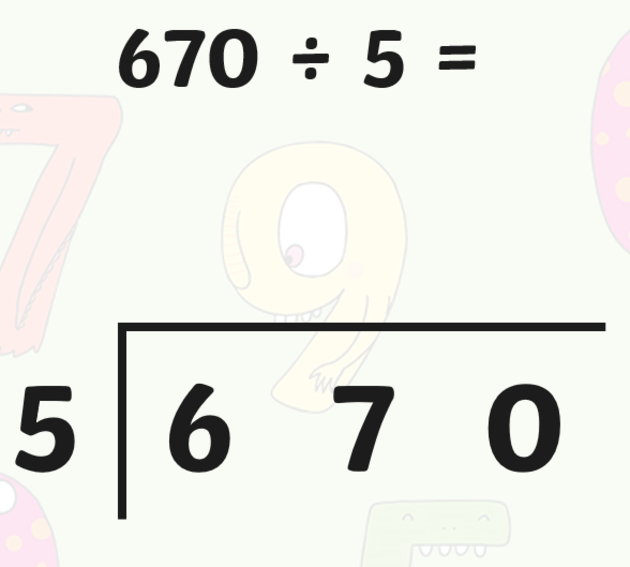
Work out how many lots of 5 there are in 6 hundreds.

There is 1 lot of 5 in 6 hundreds. The number 1 is written above the number 6.
There is 1 hundred left over (remainder) because 6 − 5 = 1. We carry this 1 over to the next digit to be divided by the divisor.

Work out how many lots of 5 are in 17. There are 3 lots of 5 in 17 and there is a remainder of 2. The number 3 is written above the number 17 and the 2 tens are carried over to the next digit in the dividend.
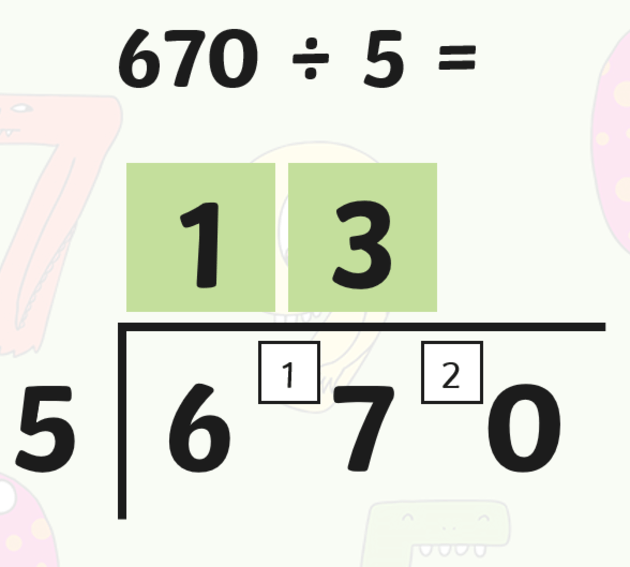
Work out how many lots of 5 are in 20. There are 4 lots of 5 in 20. The number 4 is written above the number 20.
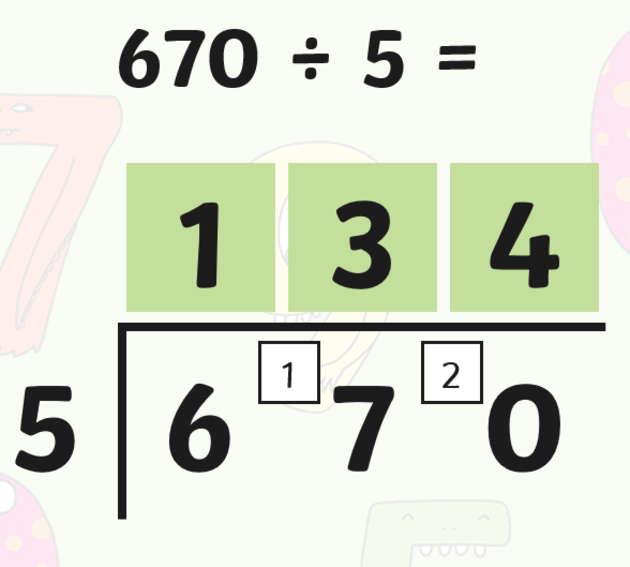
There are 5 lots of 134 in the number 670 so 670 ÷ 5 = 134.
In Key Stage 1, children begin to explore the concept of division by sharing objects into equal groups and writing corresponding stem sentences, before moving on to formal written division in Key Stage 2. Formal written methods include chunking, short division and long division.
For more information or guidance, please see the national curriculum in England: mathematics programmes of study.
Pupils should be taught to:
Pupils should be taught to:


